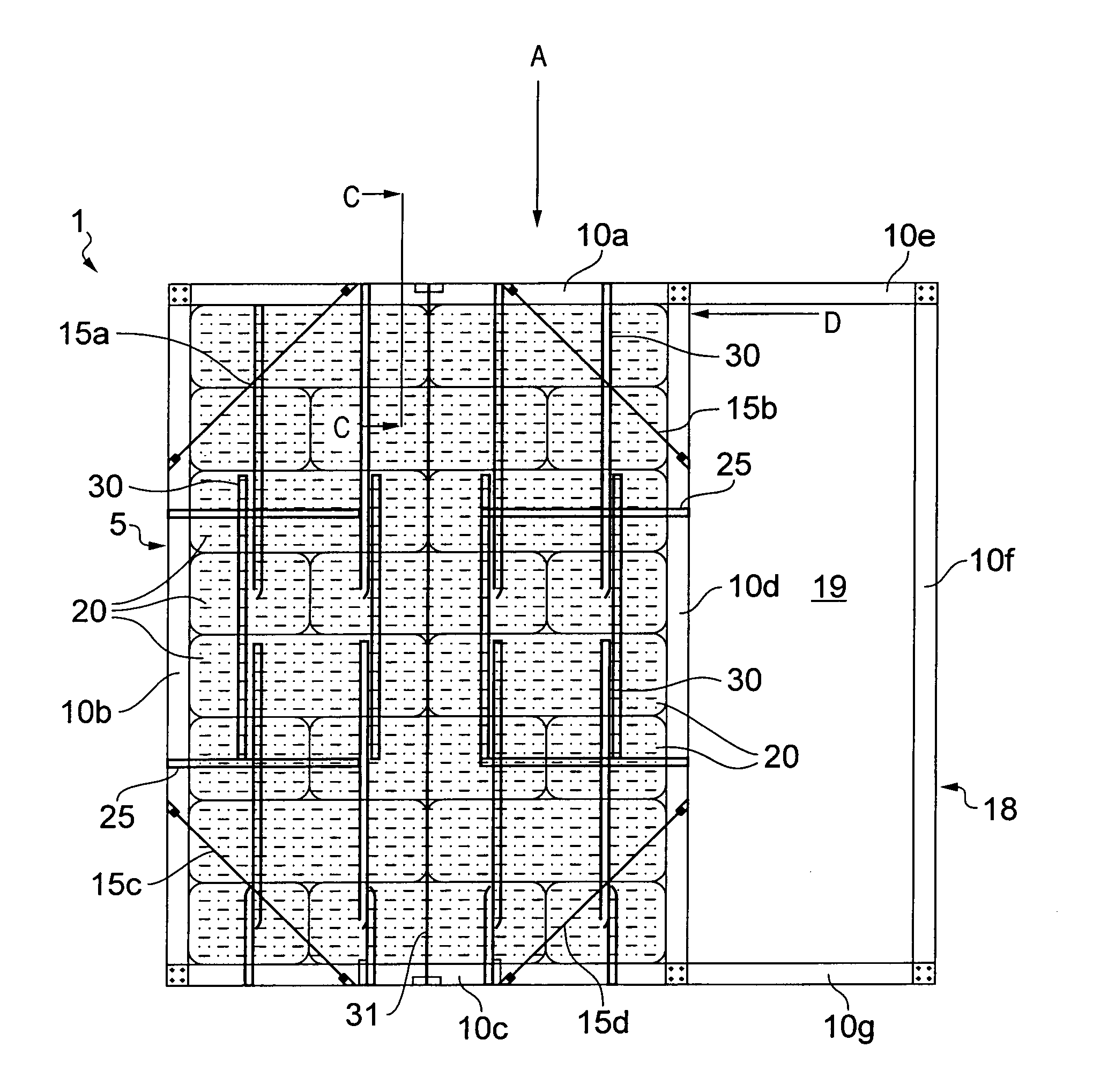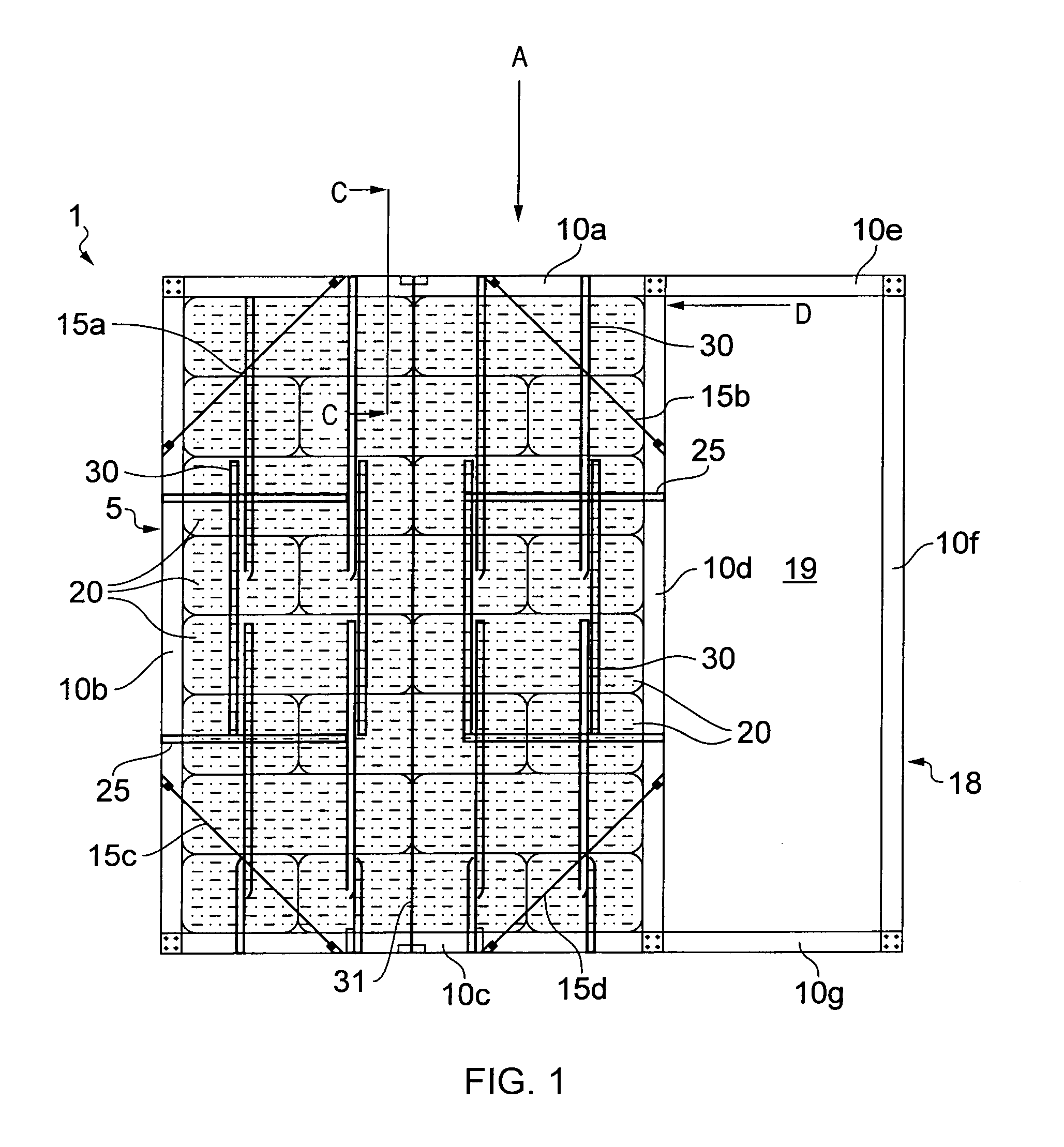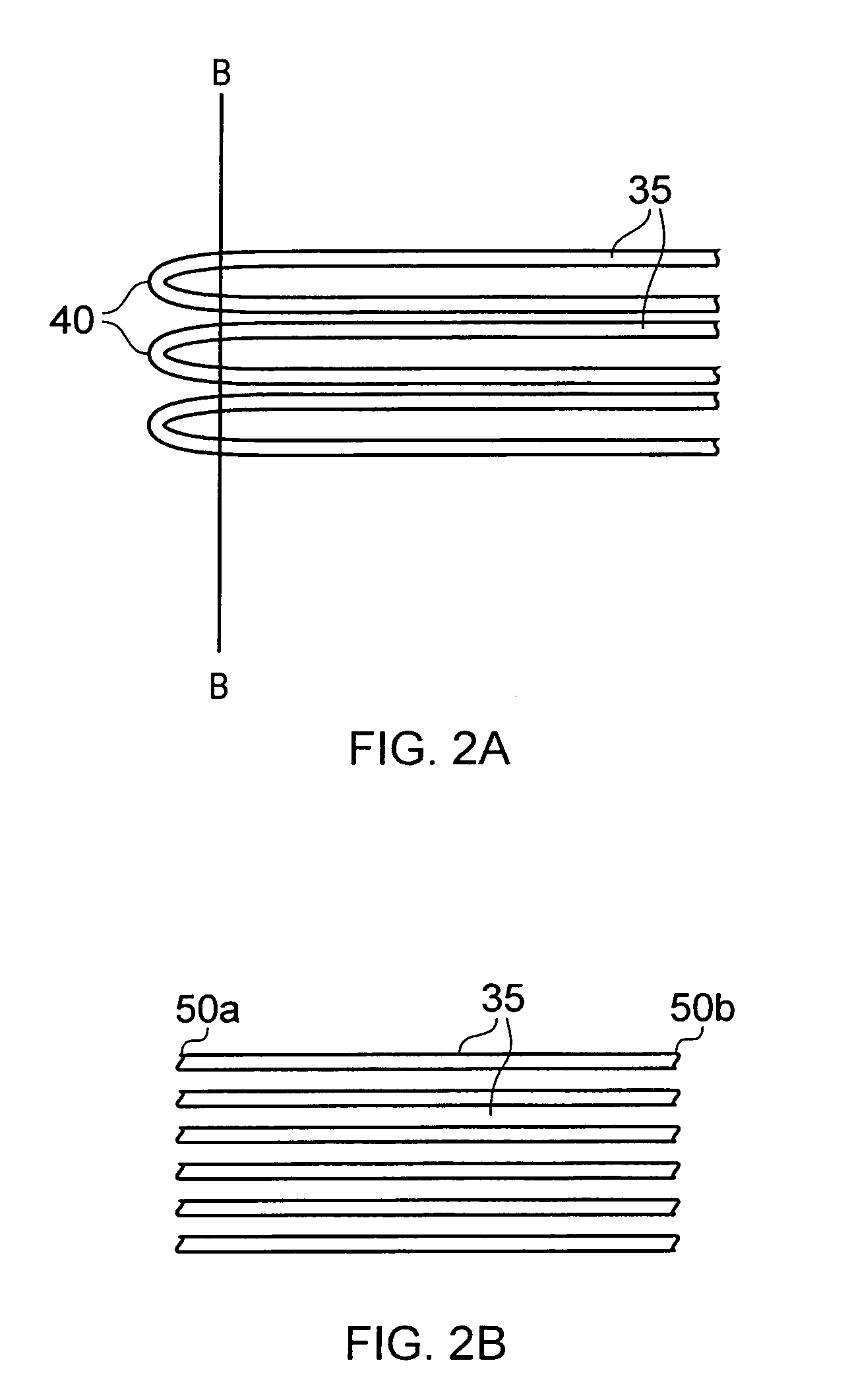Construction panel
a construction panel and construction technology, applied in the field of construction panels, can solve the problems of high amount of cosub>2 /sub>emitted through their manufacture, detrimental environmental effects, etc., and achieve the effects of reducing delays and construction project duration, easy recycling, and high quality
- Summary
- Abstract
- Description
- Claims
- Application Information
AI Technical Summary
Benefits of technology
Problems solved by technology
Method used
Image
Examples
Embodiment Construction
FIG. 1 shows a building panel 1 having a timber frame 5, with four sides, 10a, 10b, 10c and 10d. The frame is braced with corner braces 15a, 15b, 15c and 15d which serve to stiffen the structure and maintain the corners at an angle of 90°. A secondary frame 18 formed by secondary frame sides 10e, 10f and 10g is also shown; these frame sides, along with side 10d of the frame 5, form aperture 19. Sides 10e and 10g may, in fact, be extensions of sides 10a and 10c, respectively, such that, for example, elements 10a and 10e are a single, unitary element. The secondary frame may be used as, for example, a window frame or a door frame, with the aperture 19 being covered by a window or a door, respectively.
A plurality of straw bales 20 are positioned in eight layers within the frame, in a running bond arrangement. Timber dowels 25 are inserted through the bales within a single layer, to hold them in the correct position. Dowels 30 may also be inserted through the layers of bales, to hold th...
PUM
| Property | Measurement | Unit |
|---|---|---|
| density | aaaaa | aaaaa |
| thick | aaaaa | aaaaa |
| thick | aaaaa | aaaaa |
Abstract
Description
Claims
Application Information
 Login to View More
Login to View More - R&D
- Intellectual Property
- Life Sciences
- Materials
- Tech Scout
- Unparalleled Data Quality
- Higher Quality Content
- 60% Fewer Hallucinations
Browse by: Latest US Patents, China's latest patents, Technical Efficacy Thesaurus, Application Domain, Technology Topic, Popular Technical Reports.
© 2025 PatSnap. All rights reserved.Legal|Privacy policy|Modern Slavery Act Transparency Statement|Sitemap|About US| Contact US: help@patsnap.com



